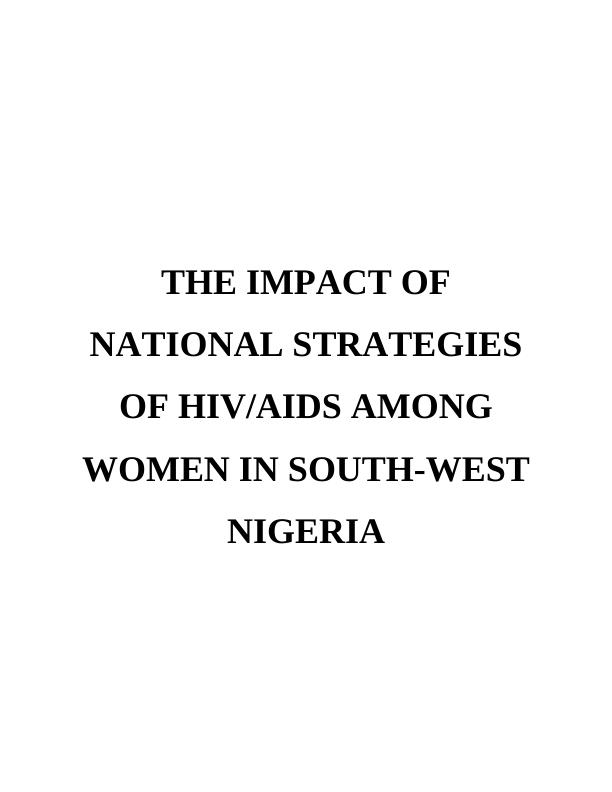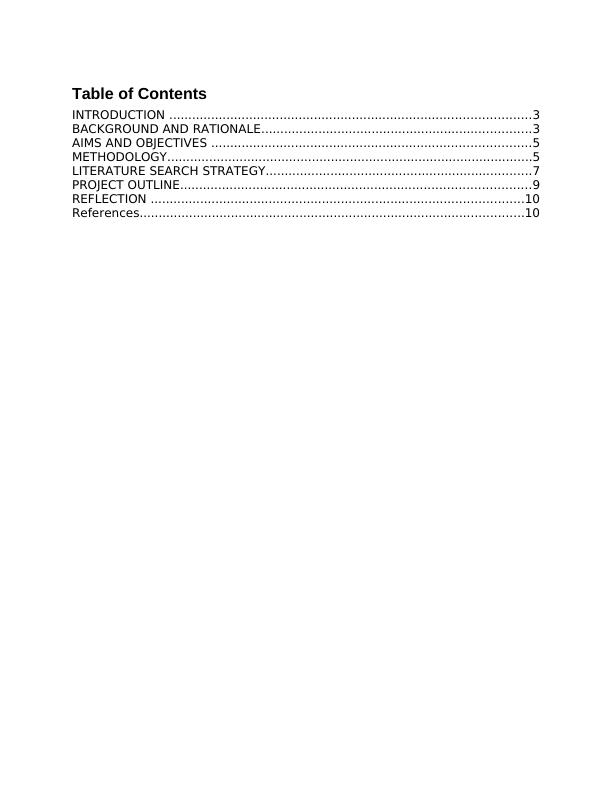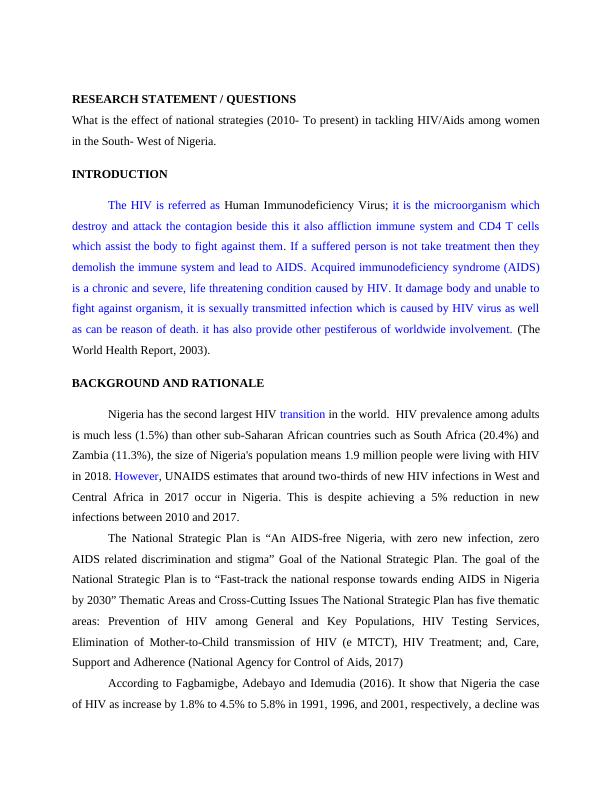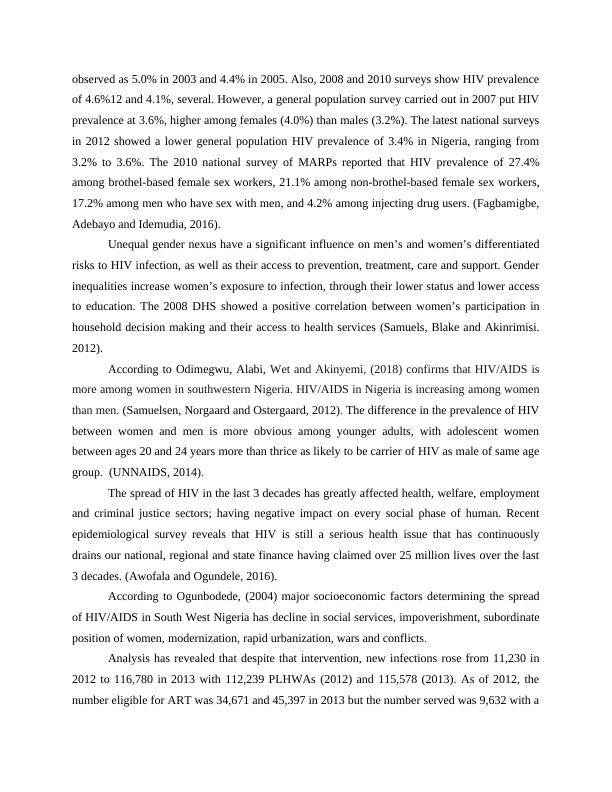The Impact of National Strategies of HIV/AIDS Among Women in South-West Nigeria
11 Pages3817 Words54 Views
Added on 2023-01-16
About This Document
This study aims to investigate the effect of national strategies in tackling HIV/AIDS among women in South-West Nigeria. It explores the prevalence of HIV/AIDS, social determinants, health and socioeconomic implications, and the effectiveness of national strategies. The study uses secondary data and follows a principle-based approach to ethical considerations.
The Impact of National Strategies of HIV/AIDS Among Women in South-West Nigeria
Added on 2023-01-16
ShareRelated Documents
End of preview
Want to access all the pages? Upload your documents or become a member.
Global Health Issue: HIV from Local, National, and Global Perspective
|15
|4734
|86
Social Determinants of Health
|7
|2106
|64
Communicable Diseases: Global HIV Epidemiology, Role of Agent, Host and Environmental Factors
|18
|5405
|228
Health HIV and AIDS Australia Essay 2022
|9
|2101
|26
Impact of Sexually Transmitted Infections on Fertility and Neonatal Health
|3
|1928
|165
Health Protection: Risk Assessment and Management of HIV in Africa
|12
|4350
|141




